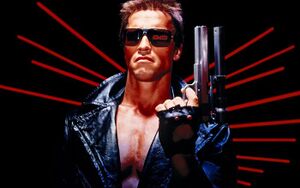AI risk
AI risk is the potential for artificial intelligent systems to cause unintended harm.

Sources of harm from AIПравить
AI harm might arise from:
- Bugs: the software behaves different from the specification
- Specification errors: designers didn't foresee all the circumstances properly (this includes unanticipated interactions between different modules)
- Security errors: the software gets hacked for purposes other than its original design
- AI Control Problem: an AI that can't be controlled.
The potential for harm is compounded by:
- Fierce competitive pressures, which may lead some designers to cut corners
- Much software having a "black box" nature which means that its behaviour in new circumstances is difficult to predict
- AI components being available as open source, and utilised by third parties in ways their designers didn't intend (or foresee).
Risks from AI even in the absence of an intelligence explosionПравить
Popular accounts of AI risk often focus on two factors thought to be preconditions for any major harm from AI:
- The AI become self-aware
- The AI undergoes an intelligence explosion
However, Viktoriya Krakovna points out that risks can arise without either of these factors occurring[1]. Krakovna urges AI risk analysts to pay attention to factors such as
- Human incentives: Researchers, companies and governments have professional and economic incentives to build AI that is as powerful as possible, as quickly as possible
- Convergent instrumental goals: Sufficiently advanced AI systems would by default develop drives like self-preservation, resource acquisition, and preservation of their objective functions, independent of their objective function or design.
- Unintended consequences: As in the stories of Sorcerer’s Apprentice and King Midas, you get what you asked for, but not what you wanted
- Value learning is hard: Specifying common sense and ethics in computer code is no easy feat.
- Value learning is insufficient: Even an AI system with perfect understanding of human values and goals would not necessarily adopt them
- Containment is hard: A general AI system with access to the internet would be able to hack thousands of computers and copy itself onto them, thus becoming difficult or impossible to shut down – this is a serious problem even with present-day computer viruses.
Pathways to dangerous AIsПравить
As classified by Roman Yampolskiy, pathways to dangerous AIs include[2]:
- On Purpose – Pre-Deployment
- On Purpose - Post Deployment
- By Mistake - Pre-Deployment
- By Mistake - Post-Deployment
- Environment – Pre-Deployment
- Environment – Post-Deployment
- Independently - Pre-Deployment
- Independently – Post-Deployment
AI Risk AdvocatesПравить
One of the most notable Risk Advocates in regards to AI is Elon Musk, which is said to be one of the reasons behind his creation of OpenAI.[3][4]
See alsoПравить
External linksПравить
ReferencesПравить
- ↑ Risks From General Artificial Intelligence Without an Intelligence Explosion
- ↑ Taxonomy of Pathways to Dangerous AI
- ↑ https://en.wikipedia.org/wiki/Open_Letter_on_Artificial_Intelligence
- ↑ http://www.telegraph.co.uk/technology/news/11342200/Top-scientists-call-for-caution-over-artificial-intelligence.html